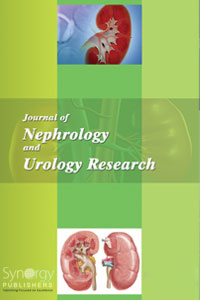
Urodynamic Evaluation of Female Patients with Metabolic Syndrome Pages 27-32
Kutan Ozer1, Mustafa Ozan Horsanali1, Sacit Nuri Gorgel1, Emin Ozbek2
1Izmir Katip Celebi University Ataturk Training and Research Hospital, Urology Department Izmir, Basın Sitesi Mh., 35150 İzmir, Turkey; 2Istanbul Training and Research Hospital, Urology Department, Istanbul, Kasap İlyas Mah. Org. Abdurrahman Nafiz Gürman Cd. PK: 34098, Turkey
DOI: http://dx.doi.org/10.12970/2310-984X.2015.03.02.2
Abstract: Objective: In this study, our main objective is to show the connection between metabolic syndrome (MetS) and bladder functions by using urodynamic evaluation in female MetS patients.
Materials and Methods: 131 female patients referred to our clinic for urodynamic evaluation from April 2014 to December 2014 were included in our study. 85 of these patients were diagnosed with MetS (study group) meanwhile 46 patients did not meet MetS criteria (control group). MetS definitions were taken from National Cholesterol Education Program’s Third Adult Treatment Panel criteria. SPSS 17.0 was used for statistical analysis of data and p<0.05 values were deemed as statistically significant. Results: Urodynamic results of 131 patients were analyzed and patients were divided into study and control groups in accordance with their MetS profile. 85 patients were included in the study group and rest 46 were used as the controls. A statistically significant difference was detected when IPSS results were separated into low, intermediate and severe between study and controls (p=0.007). Moreover, urge-type incontinence was more frequent in MetS patients when compared with control group (p<0.001). However, there was no significant difference between groups in terms of SEAPI scores and IPSS. Patients with MetS had significantly higher detrusor, vesical and abdominal pressure in comparison with control group (p<0.001). No significant difference was found in uninhibited contractions, first urinary sense, strong desire to urinate, Valsalva leak-point pressure (VLPP) and abdominal leak-point pressure (ALPP) parameters between the groups. Conclusion: Our results showed that MetS and its components can be associated with neurogenic bladder symptoms due to peripheral neuropathy and urge incontinence. Female patients with MetS have significantly higher post-voiding residue and intravesical pressure in comparison with control group. Further clinical studies with longer and controlled series are necessary for clarification of the metabolic syndrome’s effect on bladder dysfunction on a molecular level.
Keywords: Metabolic syndrome, urinary incontinence, urodynamic, neurogenic bladder, bladder dysfunction.
Read more

